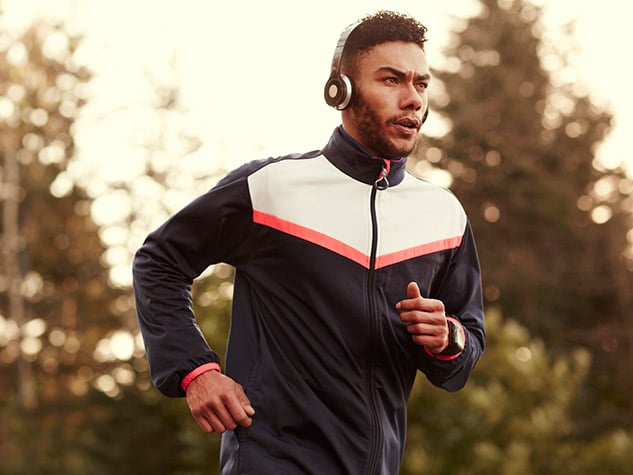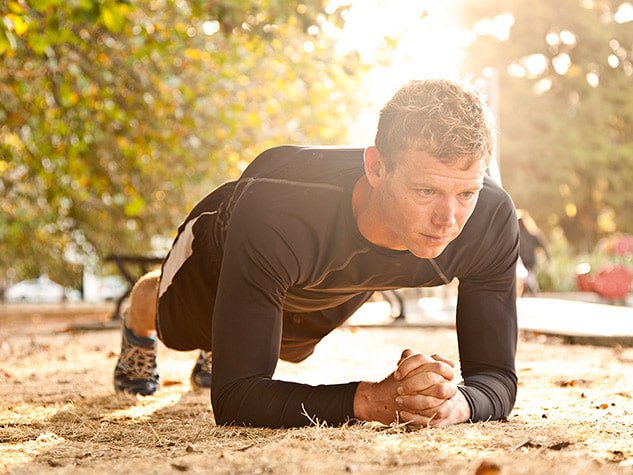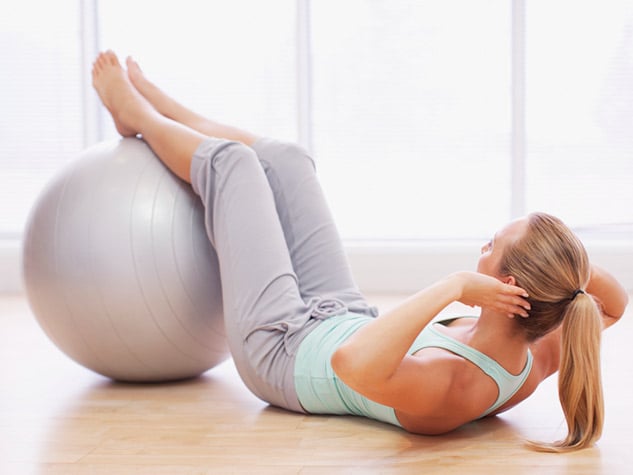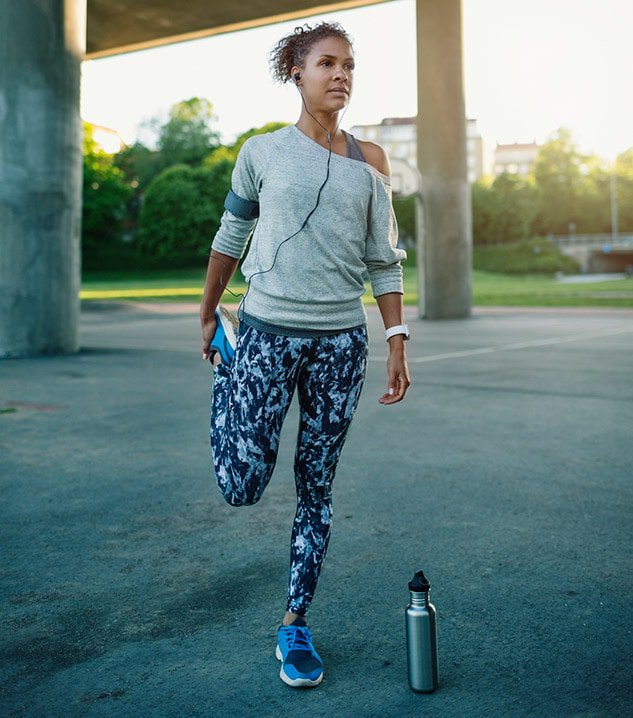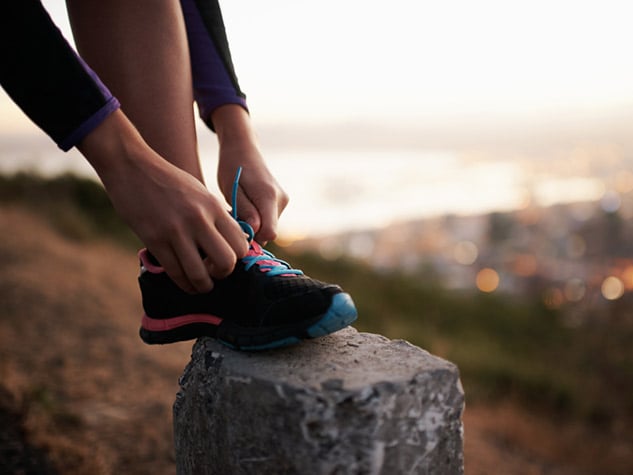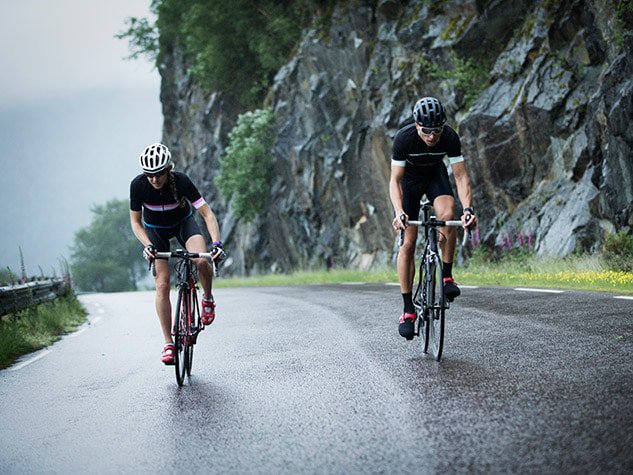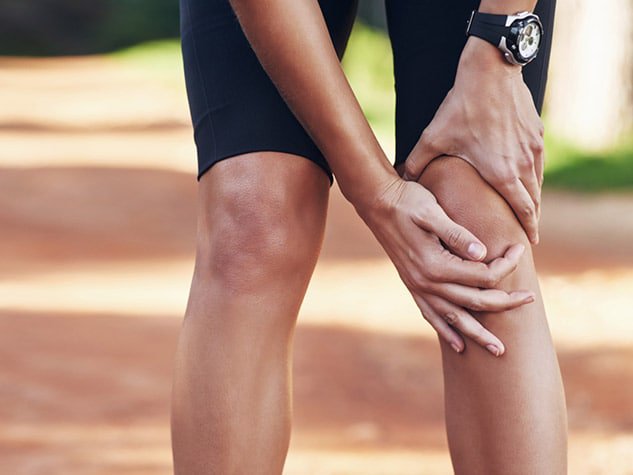10 Ways To Stay On Top Of Injury
A complete roadmap to keep you on the road and off the physio’s table.
A complete roadmap to keep you on the road and off the physio’s table. – By Richard Lovett
For runners, injury goes with the territory. Research shows that every year between a fifth and half of us get injured. The exact figure is hard to pin down because sports medicine researchers don’t quite agree on what exactly qualifies as an injury. Is it something bad enough to make you seek help? Or any niggle that puts you in whinge and/or rest mode?
Whatever the definition, the percentage is significant. To give you a precise example, in studies of those training for Canada’s 60,000-runner Vancouver Sun Run 10K, Jack Taunton – a sports medicine professor at the University of British Columbia – found 31 per cent of study participants had injuries that forced them to miss three or more consecutive days of training.
There are lots of reasons why runners keep getting hurt, but perhaps the best explanation is that striving for peak performance is like trying to walk the crest of an asymmetrically sloped ridge. On one side, the angle is moderate. Stray off in that direction and all that happens is you don’t quite achieve your best.
If you’re chasing your best possible performances, you’re going to have to risk trying to balance along that knife-edge. Luckily, you can recognise when you’re about to step into the void and either pull back before it’s too late, or minimise the damage.
Here are 10 key steps to help you find that balance and avoid injury.
1/ Respect the need for rest
The leading causes of injuries, experts agree, are training errors. And of these, the most common is trying to do too much. We all know the theory: if you run a hard session, your body needs time to regenerate and strengthen itself after that effort. ‘That’s how, biologically speaking, everything works,’ says Bob Williams, a coach who specialises in rehabilitating injured runners.
Too many of us, however, don’t do what we should. We train hard, but don’t take enough time to recover from the stress. It’s also important to realise that stress is stress, whether it’s from your running, your job or a baby who won’t sleep through the night. ‘All of these you have to recover from,’ says David
It doesn’t help that runners are often told that the best way to get faster is to train with people who are faster than they are. It works… but only up to a point. ‘That needs to be balanced by running easily with a group that’s slower than you,’ says coach Tom Derderian. ‘If you keep trying to jam improvements faster than you can adapt, you’re going to break, eventually.’
It’s a cruel irony that one of the signs you might be on the verge of collapse is the feeling of invincibility you have when everything seems to be going perfectly. It’s an insidious sense that you can start getting away with things. ‘There’s some kind of light that goes on, and you forget the basics,’ says Williams. ‘You train harder than your ligaments and tendons will allow.’
Feeling really good in training can lure you to ignore your plan and all the advice you’ve followed to get there, warns podiatrist Ray McClanahan.
2/ Walk – or lunge – before you run
The first step is often the most dangerous. ‘Start your warm-up absurdly slowly,’ says Derderian. That’s particularly important advice for people with desk jobs. He suspects many injuries are incurred in the first minute of a session.
For most of us, walking might be a good idea at the start. ‘Then sort of shuffle,’ says Derderian. Life is not so short that you can’t spend five or 10 minutes getting into your run. And don’t worry if others see you as slow. ‘Vanity undoes people,’ warns Derderian.
There was a time when runners never took a step without striking a series of stretching poses. Now that studies have proven pre-workout static stretching can be detrimental, many runners simply head out the door. But a short routine of dynamic stretches can loosen and activate your muscles without the downside of static stretching, making you less likely to get injured. Running coach Jay Johnson recommends a simple series of lunges in several planes (forward, sideways, backward) that engages and stretches all the leg muscles. Others use high steps, dynamic toe touches, leg swings, skipping and a host of other moves to achieve the same effect.
3/ Keep a training diary
You may find it tedious, but in the long term, this simple step can be crucial. ‘They are hard to keep, but they are so valuable,’ says McHenry. ‘You just wouldn’t connect the dots unless you’ve written them down.’
A simple method is to keep a wall calendar somewhere you go every day, such as on your bathroom door or beside the kettle, and fill in the details of yesterday’s session while you’re doing something that’s part of your daily ritual, such as waiting for the shower to warm up or the coffee to brew. Or make a Google Doc you can access from your phone after your run. ‘Any time you can integrate something like that into your routine, you’ll be more successful,’ says McHenry.
4/ After warming up, self-assess
If you’ve got a niggling pain, does it go away during your warm-up? If it does, you’re probably OK to continue the session. If it gets worse, McHenry says, that’s an indication you need to stop.
Don’t delude yourself. Some runners have high pain thresholds, allowing them to ignore things they shouldn’t. Any injury that changes your stride means the run is over. Otherwise you risk a compensation injury, and they are often the worst. ‘Get on a bike or in a pool until you can run with your normal gait,’ says McClanahan.
Warm-up niggles can also be muscle soreness that indicates you have not fully recovered from your last session and need to go easy, says Bill Roberts, medical director for the Twin Cities Marathon in the US.
Williams asks his runners to rate their energy levels after their warm-up on a 10-point scale. If they come in at six or lower, they shouldn’t be doing anything more than jogging. At seven or eight, they do the session, but only a scaled-down version. Above that, they’re ready to go at full throttle. Also useful, he says, is to re-evaluate after a few 100m strides. If those don’t feel right, or you’re significantly slower than usual, it’s another indication that you may not be ready for the planned session.
The final part of self-assessment is to pay attention to trends. If a pain is getting better day by day, you’re heading in the right direction. If it’s getting worse, what you’ve been doing isn’t working. If it’s staying the same, you may be turning a simple problem into a chronic one. And if you’re limping around the next morning, that’s a sign that you need a rethink.
There comes a time when you need to seek professional help. For significant pains, elite coach Lee Troop puts that seek-help date at 72 hours. For smaller ones, even those that go away during your warm-up, McHenry puts it at a couple of weeks. Go past those points and your problem will worsen.
5/ Maintain your stabilisers
Efficient running is about moving forward as smoothly as possible. But that’s not necessarily a good thing. ‘Runners are their own worst enemy,’ says podiatrist Robert Conenello. ‘They do everything in straight lines.’
One solution is to do some trail running, where your muscles work differently. But it’s also useful to do strengthening exercises, especially focusing on the core and hips.
A quick check to see if you might benefit from this is to stand on one leg in front of a mirror and do a one-legged squat. If you lose balance or one knee bends inward more than the other, try these hip exercises.
Jay Dicharry, author of Run Like an Athlete, suggests also working on your big toe, which he believes is crucial to producing a stable foot. Sit barefoot with your foot flat on the ground. Raise your big toe, then drive it back down while elevating the other toes. Go back and forth several times.
Another exercise not just for the foot, but also for the ankle and the hip, is single-leg balancing. You don’t need to do it for minutes on end. ‘If people stood on one leg while brushing their teeth, it would help enormously,’ says Dicharry.
6/ Invest in some prehab
Amy Begley, a 10,000m Olympian-turned-running-coach, believes strongly in early self-intervention when it comes to tackling known trouble spots. Her wardrobe looks like the storeroom at a physiotherapy clinic, but the basic equipment isn’t all that fancy or expensive.
In addition to having the necessary gear to hand, another key to prehab is finding ways to incorporate it into your daily routine, says Begley. Going up an escalator, for example, is a great opportunity for stretching tight calves. You can strengthen your shin muscles by doing toe raises at your desk or during dinner. ‘Find small ways to add exercises throughout the day,’ says Begley. Troop agrees, suggesting you do some hip exercises while lying on the floor watching TV.
Basic prehab kit:
A/ Yoga ball (Also known as a Pilates ball or balance ball): For hamstring bridges or various core exercises.
B/ Tennis ball: For trigger-point massage.
C/ Marbles: For toe exercises to relieve/prevent plantar fasciitis. Pick them up with your toes and move them. You can do the same by scrunching up a towel.
D/ Night boots/splints: To relieve pressure on the plantar fascia or Achilles tendon.
7/ Address your inflexible areas
Many runners do stretches simply because everyone else is doing the same ones. But that’s unnecessary if you’re flexible, says Dicharry. The areas most likely to be underflexible in runners, he says, are the hip flexors, ankles and big toes. To assess yourself, see Flex Tests, below.
Another approach comes from Phil Wharton, a musculoskeletal therapist and author of The Whartons’ Stretch Book. He believes there’s much to be gained from incorporating active stretches not only into your warm-up, but also into your routine later in the day, in part because we spend so much of our lives sitting and, says Wharton, ‘kind of turning off or detraining the muscles we want to run with’.
The most important areas to work, he says, are the glutes, lower back, hamstrings (including stretches that isolate the area behind the knee), hip adductors and abductors, quadriceps and calves. Wharton advocates active stretching, in which the stretch is held for a second or two, released, then repeated.
Flex tests
A/ Doorframe test: To test hip flexibility, get down on one knee, with your back to a doorframe or other tall, narrow object. Flatten your lower back against the doorframe by rotating the top of your pelvis backward until your spine is vertical. If that makes you feel a stretch in your hip flexors, they’re too tight. Stretch them by striking the same pose (minus the doorframe), pushing your hips slightly forward if needed. Or stand and prop one foot comfortably on a chair. Then lean forward while keeping your back leg straight and torso tall.
B/ Ankle flexibility: Sit barefoot, heels flat on the floor. Put something vertical in front of you, such as a foam roller, and put your toes against it. Scoot forward until your knee touches it. If you can’t do this without raising your heel off the ground, your ankle lacks flexibility, says Dicharry. To address this, regularly foam roll and stretch your calves.
C/ Big toe flexibility: Put your foot flat on the floor, reach down and pull your big toe up, aiming for an angle of 30 degrees. If you can’t get there, says Dicharry, your plantar fascia is tight. Rather than stretching it, which can be risky, he recommends self-massage.
8/ Wear comfy shoes, all the time
The latest scientific findings show that when it comes to choosing shoes your body may know better than your friends, the shoe companies or the experts in your running shop. A study by Benno Nigg, former co-director of the Human Performance Laboratory at the University of Calgary in Canada, asked more than 200 soldiers to test a variety of shoe inserts and rate them for comfort. Half the soldiers were given the inserts they’d rated as most comfortable, with no attempt to tell them whether their choices were ‘right or ‘wrong’ for their feet. Those who got the inserts had a 53 per cent lower injury rate. ‘And we only asked them to tell us what their comfort level was,’ says Nigg.
Nigg isn’t sure what this ‘comfort filter’ means, but he thinks it’s a critical factor in preventing shoe-related injuries. Conenello agrees. ‘If your shoes make you feel awkward, it’ll throw you off,’ he says.
9/ Recover actively from injury
Injured runners generally view cross-training as a way of keeping fit, but it’s also an excellent way of speeding your recovery. Our ancient ancestors had to travel to find food; if they were immobile for long, they starved, says Derderian. So our bodies are adapted to heal on the move. ‘Immobility is anathema,’ he says. ‘We are far away from the bed-rest model.’
Hanson. Not that you should use this as an excuse to run on an injury that needs rest. All that’s needed, Hanson says, is ‘any mode of exercise that elevates the heart rate for an extended period’.
10/ If it hurts, act now
Runners exacerbate their injuries, or stay injured for longer, because of denial. ‘Doing the little things early into an injury can shorten the time spent on the sidelines,’ says Begley.
Troop believes that many injuries can heal quickly if treated in the first 24-72 hours. One of the best tools, he says, is ice. He’s also a fan of foam rolling and of ibuprofen, at least in the first 48 hours. The latter, he realises, is controversial. But he thinks it’s important to reduce the inflammation as quickly as possible so you can then rehabilitate the true problem. If none of this works within 72 hours, it’s time to seek professional help.
Then, if you are forced into taking time off from running, come back slowly. ‘I have witnessed people rehab a stress fracture and end up with a soft-tissue injury because they pushed too early,’ says Begley. ‘People feel a need to make up for lost time, but that can backfire.’
Related to this, she says, is avoiding the temptation to keep testing an injury. ‘If you continue to poke, rub, stand or jump to test the injury, you are delaying healing.’
Running coach Greg Roy sums it all up with this advice: ‘Start once.’ You only want to make one comeback. If you start back too early, you will have to take more time off and start again. So don’t rush it.
And, finally, realise that injury isn’t failure. ‘It’s an opportunity to figure out how to do something better – part of the process of being a runner,’ says McHenry. ‘It’s not going to be calm seas every day.’
READ MORE ON: cross-training foam-roller injury injury-prevention pain sore





